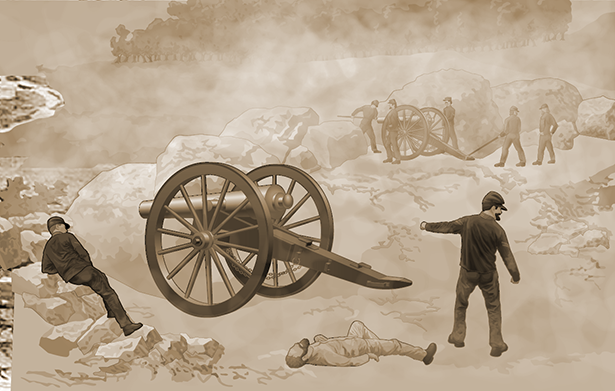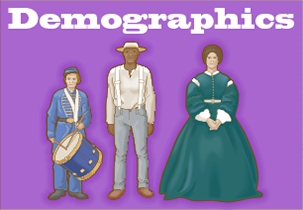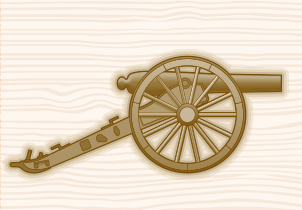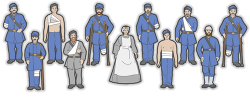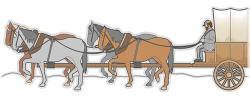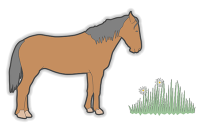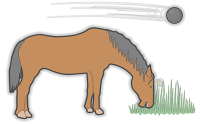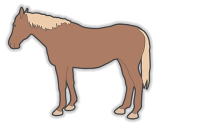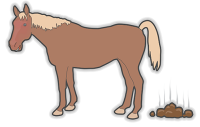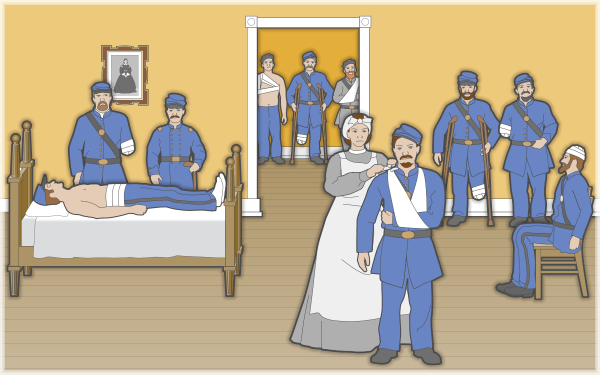
The small town of Gettysburg, Pennsylvania had 2,400 residents prior to the battle.
After the battle was over, there were approximately 21,000 dead or wounded soldiers left behind
in Gettysburg to be buried or cared for. That represents nearly 10 casualties remaining behind per town
resident.
Questions:
Questions: After a natural disaster, small towns must care for many who were
injured or killed. How have communities you know managed crises such as storms or earthquakes?
How many
people were affected? How many were available to help them? How did young people your age pitch in?
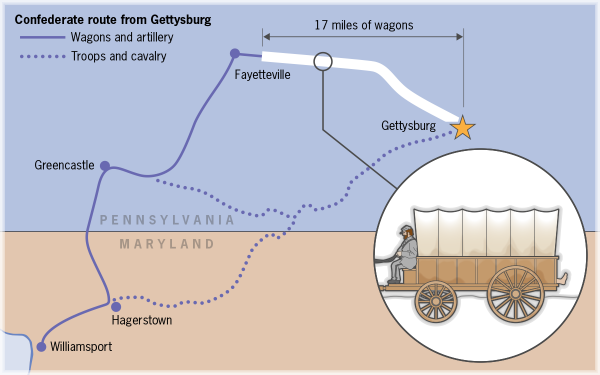
The wagon train carrying wounded Confederate soldiers back to Virginia after the battle was 17
miles long. Driving at highway speeds in a car today, it would take you over 15 minutes to go from the front of
the wagon procession to the end.
Question:
What other comparison can you make to describe how long this wagon train was?
Think about freight trains that pass through at your local crossing. How long are they,
and how long do they take to go by?
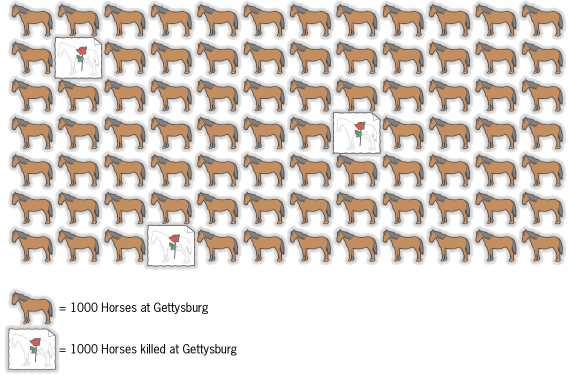
There were 72,000 horses and mules at Gettysburg. 3,000 horses were killed. One resident, Lydia
Lyster, whose home was used by General George Meade as his headquarters, found 17 dead horses in her yard alone.
It is said that she was able to sell their bones at a half cent per pound.
Question:
What have you found in your yard or community that you could clean up -- and make money in the process?
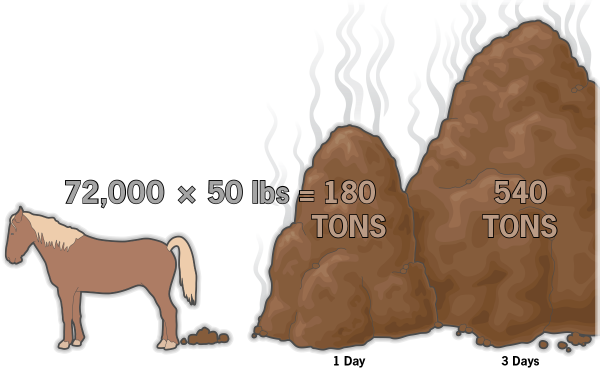
There were 72,000 horses and mules at the Battle of Gettysburg. Each horse produces about
50 pounds of manure EVERY DAY. That means there was 3,600,000 pounds of manure left
behind EVERY DAY. That’s 180 TONS per day, times three days.
Questions:
Think about waste products that exist in your community. What do people do to make use of them or dispose of
them without negative effects on the environment?
How do these quantities compare to what the small town of Gettysburg was left to handle?
How differently do people today think about waste than people did in 1863?
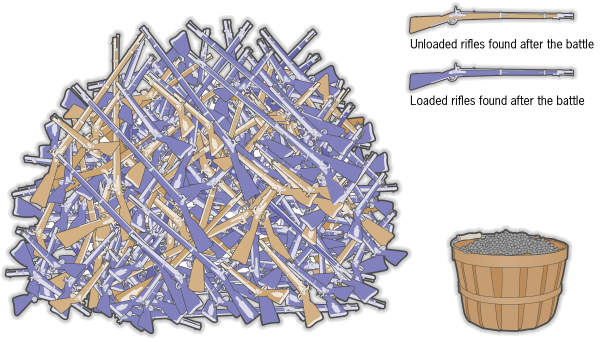
Beyond the human toll, also left behind were 37,574 rifles, 24,000 of which were still loaded.
For safety reasons, the army paid 13 cents a pound for lead gathered off the battlefield. But after some
children were killed by live ammunition, no one under the age 18 could receive compensation.
Questions:
What cleanup efforts do you know that have caused danger to the people doing the cleanup?
(Think about events in the news and events near your hometown, as well).
How would you plan for a balance of safety and cleanup?
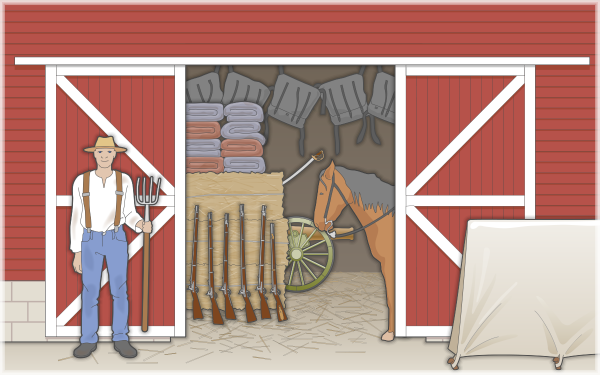
To try and recover some of their losses, the residents of Gettysburg resorted to looting the
battlefield. One farmer was found to have 10 muskets, 2 cartridge boxes, a saber, 15 blankets, 15
tents, 25 knapsacks and a horse. Another farmer had hidden a six-pound cannon on his property.
In addition to the residents of Gettysburg, hundreds of people came to Gettysburg either to look
for loved ones who had been wounded or who had died, or out of simple curiosity. (New York Times July 15, 1863.)
NEXT

Questions:
What rules would you make about taking things from a battlefield after a battle is over?
What do you believe should happen to the things left behind?
What does international law say about this issue?
What did people in France do with things they found
during World War II?
What were U.S. soldiers who fought in Europe during WWII or more recently in Afghanistan supposed to
do with things they found?
START
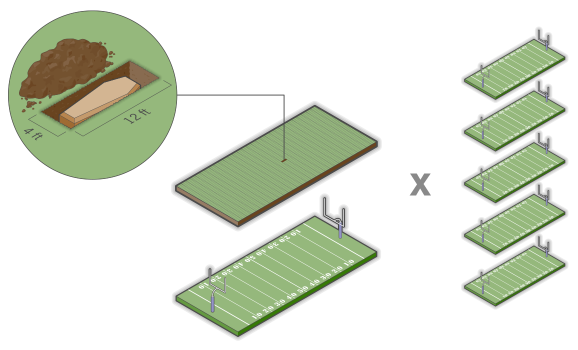
The results were gruesome. Do not read this section unless you are comfortable with such
details.
Because the battle of Gettysburg was on Union soil, the Union “held” the ground. This meant
the Union was more able to gather its dead, try to send them
“home,” or hold them until relatives could retrieve them (most likely the relatives of wealthy officers). The
rest of the Union dead were buried in a Union cemetery in Gettysburg.
Union soldiers did not bury "enemy" dead. They probably left that to the people of Gettysburg
who needed to clear their farms and yards. Since Confederate troops did not “hold” the ground, they had
limited ability to gather their dead. Beside that, they had many, many wounded to take away.
NEXT

Because of health and sanitation problems created by so many dead bodies, the approximately 6,000 dead
that were simply left needed to be buried right away. The last of the dead from the battle fought
July 2, 3 and 4 were not buried until July 10. (New York Times July 15, 1863).
If a modern burial plot measures about 4 feet by 12 feet, or 48 square feet, that would require 288,000
square feet. A US football field (including the endzones) measures 120 yards long (360 feet) by 53
1/3 yards wide (160 feet). 360 x 160 = 57,600 square feet. That’s five football fields’ worth of
gravesites, not including any space in between. There are 43,000 square feet in an acre, so this
would require about 6.7 acres.
Today the Gettysburg National Military Park covers nearly 6,000 acres.
START | NEXT

Questions:
What other Civil War locations include a cemetery?
Are there any military cemeteries near where you live?
What wars did the people buried there serve in?
Do you have ancestors buried there?
PREV | START
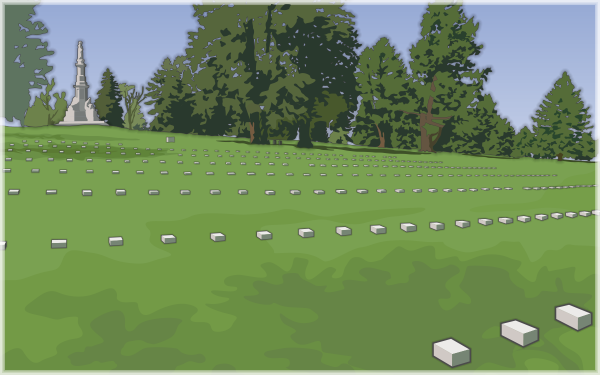
Because of the enormous number of dead who needed to be buried in Gettysburg, Pennsylvania Governor
Andrew Curtain purchased 17 acres of land for $2,475 in order to establish a national cemetery in
Gettysburg.
Nearly 3,500 Union dead were reburied in the new cemetery. Of those, the names of 1,664 are unknown. Today, the
cemetery holds 3,706 Civil War dead.
On November 16, 1863, President Lincoln attended the dedication of the cemetery, and delivered what we
now refer to as his “Gettysburg Address.”
In comparison, about 400,000 are buried across 624 acres in Arlington National Cemetery outside Washington,
DC.
NEXT

Questions:
What do people do to honor the burial sites of unknown soldiers?
Are/were they honored the same way in different countries and at different times?
START
Close x
TeachersFirst.com ⋅ Thinking Teachers Teaching Thinkers® ⋅ Copyright ©
1998-
Warning: date(): It is not safe to rely on the system's timezone settings. You are *required* to use the date.timezone setting or the date_default_timezone_set() function. In case you used any of those methods and you are still getting this warning, you most likely misspelled the timezone identifier. We selected the timezone 'UTC' for now, but please set date.timezone to select your timezone. in /usr/www/users/teachers/teachersfirst.com/gettysburg/cleanup.php on line 591
2024 by The Source for Learning, Inc. All rights reserved.


